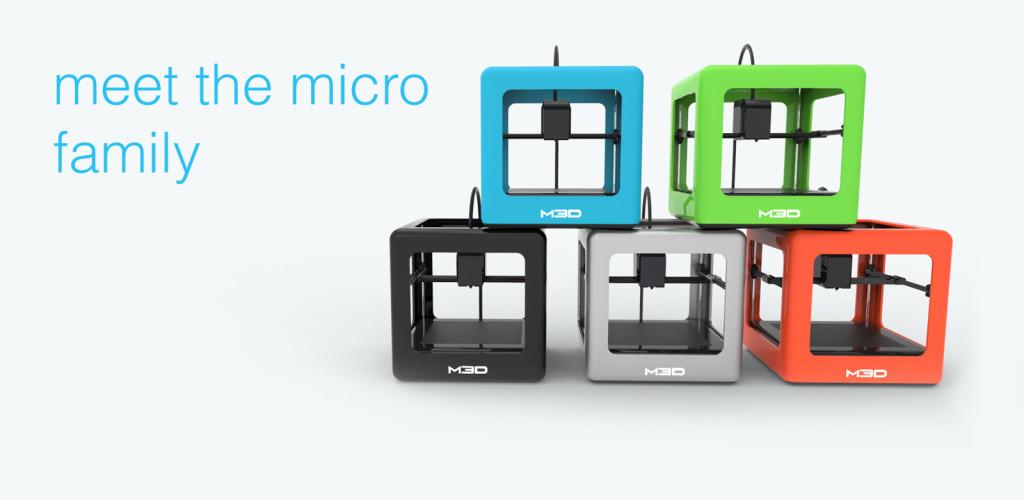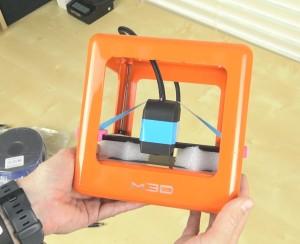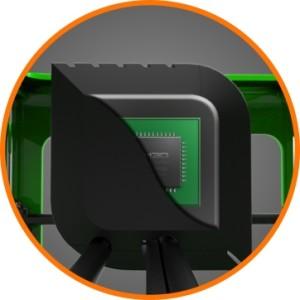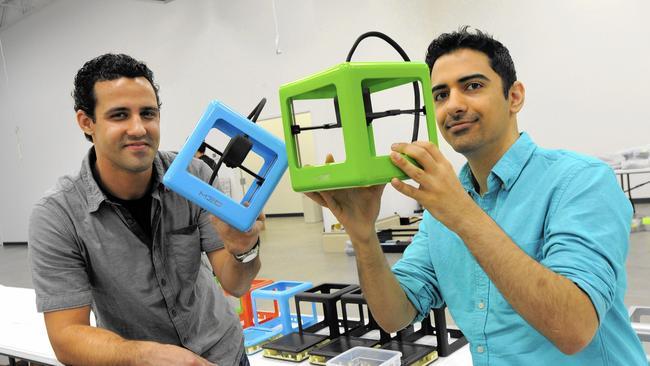![]() Ever since the two-year Pirate3D debacle finally came to an end a few weeks ago I’ve been ruminating on Kickstarter campaigns and their place in the 3D printing industry. Crowdfunding holds a special place in this industry, so many of today’s success stories started as hopeful Kickstarter campaigns that it’s easy to forget the hundreds more that withered on the vine. Sometimes I feel like those comparatively few success stories create false and unrealistic expectations for both hopeful startups and the people who back them.
Ever since the two-year Pirate3D debacle finally came to an end a few weeks ago I’ve been ruminating on Kickstarter campaigns and their place in the 3D printing industry. Crowdfunding holds a special place in this industry, so many of today’s success stories started as hopeful Kickstarter campaigns that it’s easy to forget the hundreds more that withered on the vine. Sometimes I feel like those comparatively few success stories create false and unrealistic expectations for both hopeful startups and the people who back them.
Now, with the aid of hindsight, it’s easy to look back at the Buccaneer and see everything that the Pirate3D team did wrong, but we shouldn’t forget that for a while the successfully funded campaign was considered a Kickstarter success story. The lesson that we should all learn from Pirate3D is an obvious one, it takes more than a successfully funded campaign, even one funded at $1.5 million, to become a successful business. Raising a lot of money is meaningless if you can’t fulfill the promises that you make while raising it, and sadly when it comes to Kickstarter there aren’t a lot of options for the 2,000 Pirate3D backers who won’t receive the 3D printer that they paid for.
 So how do you know what a Kickstarter success story is? The obvious place to look is the most successful Kickstarter 3D printer campaign of all time, the M3D Micro. While a bit of early buzz, a low price and reaching their relatively low funding goal of $50,000 in a matter of minutes all helped the M3D Micro campaign rack up over $3.4 million in funding, ultimately it wasn’t the money that made them a success story. And while the likelihood of another 3D printing Kickstarter campaign ever beating that goal is pretty slim, the things that made the M3D so successful are completely scalable and easily applied to just about any Kickstarter.
So how do you know what a Kickstarter success story is? The obvious place to look is the most successful Kickstarter 3D printer campaign of all time, the M3D Micro. While a bit of early buzz, a low price and reaching their relatively low funding goal of $50,000 in a matter of minutes all helped the M3D Micro campaign rack up over $3.4 million in funding, ultimately it wasn’t the money that made them a success story. And while the likelihood of another 3D printing Kickstarter campaign ever beating that goal is pretty slim, the things that made the M3D so successful are completely scalable and easily applied to just about any Kickstarter.
Yes, the M3D team had $3.5 million to start off their business, and while that is certainly a lot of money that any startup would be happy to take, that kind of success also brings with it a whole host of challenges. For one, when the dust settled M3D had to source parts for, manufacture and ship almost 11,000 3D printers. When you have to go from a production line capable of assembling 0 3D printers to a production line capable of assembling 11,000 3D printers, all in less than a year, it really isn’t how much money you have, it’s how well you planned ahead. While M3D missed their delivery goals by a few months, they still fulfilled all of their original Kickstarter rewards and successfully released the retail version of the M3D last month.
 So how did M3D do it? And what did they do that was so special? I was lucky enough to meet up with the M3D team at last week’s Inside 3D Printing Santa Clara and got the chance to find out. The first and most obvious reason for their success is the 3D printer itself. Not only is the M3D Micro a surprisingly robust and powerful little 3D printer, especially for the retail cost of $449, but it’s probably the only 3D printer that I would ever describe as adorable. When you see it in person, it just looks like a 3D printer that you want to play with, and it turns out that there is a lot of printer to play with.
So how did M3D do it? And what did they do that was so special? I was lucky enough to meet up with the M3D team at last week’s Inside 3D Printing Santa Clara and got the chance to find out. The first and most obvious reason for their success is the 3D printer itself. Not only is the M3D Micro a surprisingly robust and powerful little 3D printer, especially for the retail cost of $449, but it’s probably the only 3D printer that I would ever describe as adorable. When you see it in person, it just looks like a 3D printer that you want to play with, and it turns out that there is a lot of printer to play with.
 At only a little over seven inches squared, the Micro still packs in a bunch of features, including a fantastic auto-leveling and auto-calibrating printing bed, and hiding under the colorful plastic housing is a sturdy frame of carbon fiber rods that holds everything steady. The Micro is capable of printing with a respectable layer resolution ranging between 50 to 350 microns, and the X and Y positioning is accurate up to 15 microns. And while it may have a small printing area, that actually means that it will work with a wide array of 3D printing materials that often trip up larger printers, including PLA, ABS and nylon. And thanks to the Micro Motion sensor chip embedded inside of the printing head you can literally pick the Micro up and walk around with it while it’s printing, and I know this because I saw it happen with my own eyes.
At only a little over seven inches squared, the Micro still packs in a bunch of features, including a fantastic auto-leveling and auto-calibrating printing bed, and hiding under the colorful plastic housing is a sturdy frame of carbon fiber rods that holds everything steady. The Micro is capable of printing with a respectable layer resolution ranging between 50 to 350 microns, and the X and Y positioning is accurate up to 15 microns. And while it may have a small printing area, that actually means that it will work with a wide array of 3D printing materials that often trip up larger printers, including PLA, ABS and nylon. And thanks to the Micro Motion sensor chip embedded inside of the printing head you can literally pick the Micro up and walk around with it while it’s printing, and I know this because I saw it happen with my own eyes.
But having a quality product should be a given when you launch a crowdfunding campaign, and if you’ll remember, the few backers who actually received their printer from Pirate3D had nothing but positive things to say about it. By all accounts the Buccaneer was a really good 3D printer well worth the price, so they had that in common with M3D. But what Pirate3D didn’t have in common with M3D is where everything went wrong for them and where everything went right for M3D.
Primarily, they did their homework before they launched the campaign. While speaking to M3D co-founder David Jones it became clear that he and fellow co-founder Michael Armani didn’t want to just create and sell a 3D printer, they wanted to create a great 3D printer that would be affordable to both manufacture and sell. The part that trips up many hopeful 3D printer manufacturers is scalability. It doesn’t matter how good your 3D printer is, if you can’t make them easy to assemble then the cost of manufacturing is going to jump dramatically, along with your price point. It is pretty obvious that many startups spend little time thinking about the cost of assembly, which isn’t a big deal if you’re only selling a couple hundred printers. But if they find themselves in the position of needing to assemble thousands that oversight is really going to trip them up.
Jones and Armani spent more than two years working on the design of the Micro, and just as much of that time was spent on designing quality 3D printing technology as it was spent on finding a way to assemble it quickly without sacrificing durability. The final design of the M3D Micro only has one screw, and the rest of the parts can be snapped together in under five minutes. That means less time spent on the assembly line, fewer parts that can be defective or break, and a much lower price point.
While it is a safe bet that most companies who want to start selling 3D printers hope to sell their products in large numbers, very few of them seem to plan out exactly how they are going to do that cost effectively. From the begining, Jones and Armani found the best parts and assembly processes available that would allow them to scale production up and actually make it cheaper to do so. This allowed them to cost effectively offer the Micro at a price far lower than the quality of the parts suggest would be possible. The smart use of injection molded parts, components sourced in bulk from overseas distributors and the use of local labor to maintain a high level of quality assembly and fabrication all translated into a smart business plan that was put in place before their Kickstarter was ever launched.
If you’re a startup looking to fund your company on Kickstarter, the fact is that you won’t have time to develop a business plan after your campaign closes, you have to already have one in place. You shouldn’t be using crowdfunding to start your business, you should be running your business from the very beginning and simply include crowdfunding as part of the process. If you haven’t considered why it is important to do so, then you’re probably not ready. M3D isn’t a Kickstarter success story because they got lucky, they are a Kickstarter success story because they took luck out of the equation and replaced it with a solid business plan.
Subscribe to Our Email Newsletter
Stay up-to-date on all the latest news from the 3D printing industry and receive information and offers from third party vendors.
You May Also Like
3D Printing News Unpeeled: A $3000 SLS System, Construction Subsidies and Parameters
The Housing Affordability Crisis is one of Canadian President Trudeau’s biggest issues. Now the government has made subsidies available, including scaling new technologies, 3D printed housing and libraries of reapproved...
“Bundled Light” Enables High Quality Plastic 3D Printing from LEAM
Naturally, we expect current 3D printing methods to continuously improve, but it continues to do so in the most surprising ways. The latest development comes from LEAM, a startup spun...
Each to Their Own: Exploring Creality’s Latest Ender Trio as the Company Strengthens Its Commitment to 3D Printing Advocacy
Creality has reaffirmed its commitment to promoting 3D printing. The launch of the Ender-3 V3 SE, Ender-3 V3 KE, and Ender-3 V3 showcases the company’s dedication to catering to diverse...
3D Printing News Briefs, March 23, 2024: AM in the US Coast Guard, Navy, & More
In today’s 3D Printing News Briefs, we’re discussing the use of 3D printing in various branches of the military, including the U.S. Coast Guard, the U.S. Navy, and the German...
































